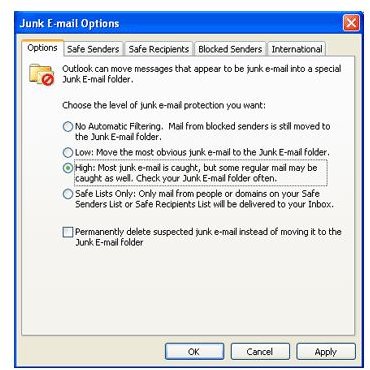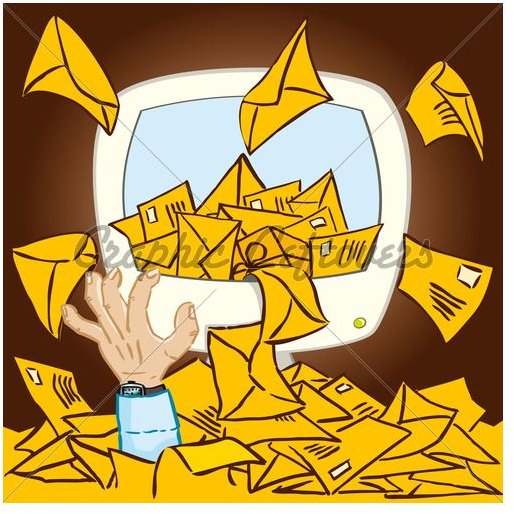Spam Blocking in Microsoft Outlook - Difference in Spam and Junk Mail
Difference in Spam and Junk Mail
Before we go on to discuss spam blocking in Microsoft Outlook, let us look at the difference in Spam and Junk mail. For most of us, all unwanted mail is spam. Then why do most email service providers offer two different folders: one for Spam and another for Junk? If you create an IMAP connection in your MS Outlook, you get two different folders – Spam and Junk – besides Inbox and some other folders. This means there is some difference in Spam and Junk mail. The methods for junk mail blocking and spam blocking in Microsoft Outlook are the same.
You can consider spam as a sub-set of junk mail. Most email providers offer protection at the junk level so that you can sort out spam yourself. MS Outlook also contains tools to control incoming correspondence at Junk level. The difference in Spam and Junk mails is that the junk mails are a targeted at unknown recipients while in spam, you might know the sender but do not wish to receive any advertising email from him/her. For example, if you subscribe to a newsletter or sign up for an Internet referral scheme, your email passes hands without your knowledge and you start receiving mails from companies that you do not even know. This is junk mail. Coming to Spam, it generally originates from the first party. For example, you visit a department store and leave your business card there. If the business card contains your email address, you may start receiving promos from the department store.
In short, the significant difference in spam and junk mail is that spam mail is directly targeted at you and your tastes while junk contains general ad material, which may or may not be intended for you.
The next section looks at spam blocking in Microsoft Outlook.
Image: GraphicsLeftover dot com
Spam Blocking in Microsoft Outlook
Spam blocking in Microsoft Outlook is easy. Most parts of junk mail filtering are automatic as it comes as an embedded code in the Microsoft email client. You must have noticed that MS Outlook automatically handles most parts of junk filtering.
Because spam is a subset of junk mail, you can use the Junk Filter Dialog to filter out the unwanted mails. The Junk mail Filter Dialog offers you four options (see image below): a) No Automatic Filtering; b) Low; c) High; and d) Safe Lists only. To open Junk Mail Filter Dialog, right click on any message header and select Junk E-Mail -> Junk E-mail Options. You can also open the dialog from the Tools menu -> Options.

As evident from the label, if you select No Automatic Filtering, MS Outlook will let all mail into your Inbox without checking for spam. I suggest the default setting, Low. It may happen that you still get junk mail into your inbox with this setting. If you notice any junk/spam mail in your mailbox, right click on the message and select Add Sender to Blocked Senders List. Similarly, if you notice any useful email in the Junk folder, right click and select Add Sender to Safe Senders List.

When you select these options, you create lists of email addresses that are allowed/blocked. You can see the Safe Senders List and Blocked Senders List by opening the Junk E-mail Dialog and selecting the corresponding tabs (Ref Fig 1 above).
You can also block entire domains by using the International tab. This often helps in avoiding mails that originate from websites in different countries (as they may be in a different language). Click on the Blocked Top Level Domain List and select the top-level domains that you wish to block.

Tip: You can also use the Rules option under Tools menu for spam blocking in Microsoft Outlook.
Related Reading:
